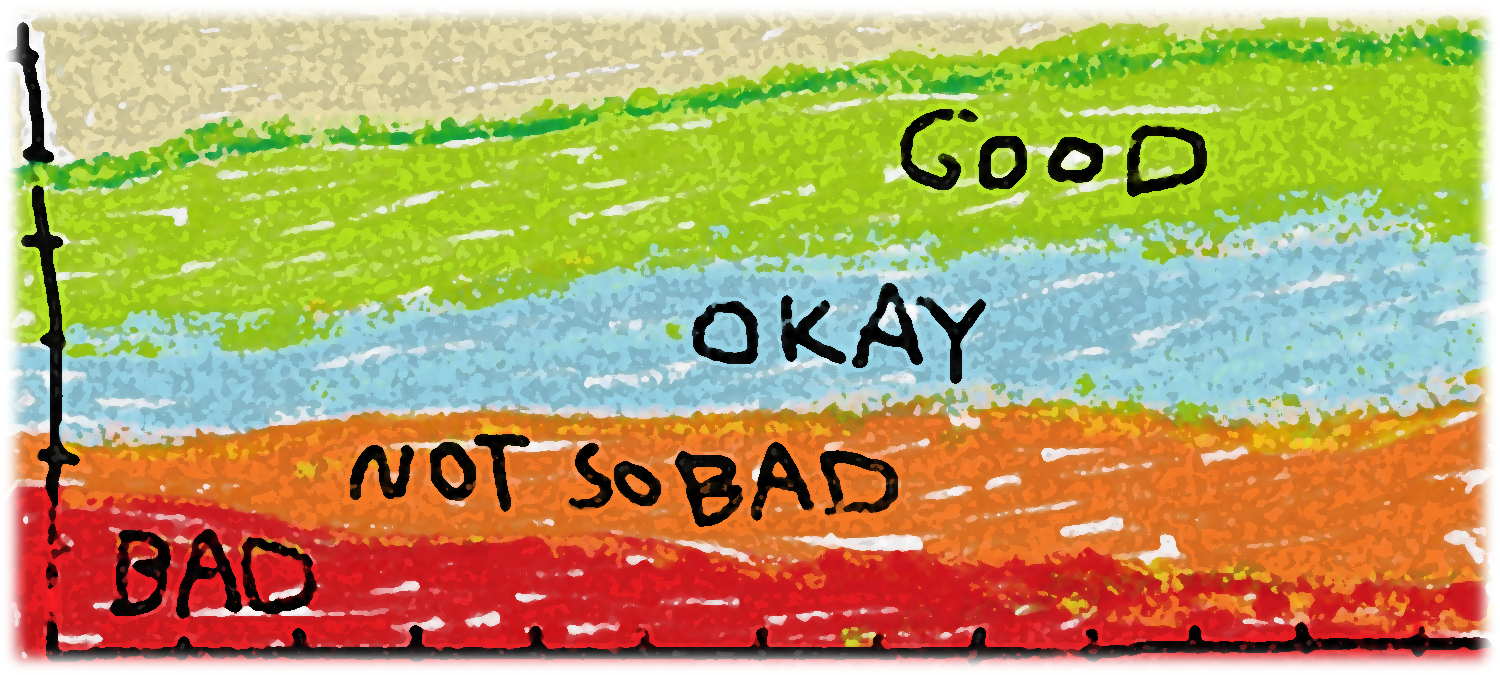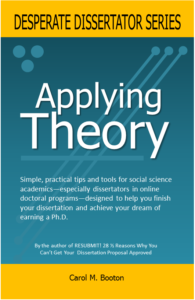Updated 8/19/2020 for APA 7th edition.
Have you anthropomorphized today? Don’t worry. We all anthropomorphize; it’s human nature, learned when we are young. For example, most of us grew up watching cartoons: Mickey Mouse, Donald Duck, Yogi Bear . . . animals that talk like humans! We see Abraham Lincoln’s face in clouds. We post videos of our cats dressed up like babies and put overcoats and hats on our dogs. We prefer cars that have “smiling” front grills. When no one else is available, we talk to soccer balls. Anthropomorphism is not a disease; it is part of the richness of life. For scholars, however, maybe not so much. Let’s talk about anthropomorphism in scholarly writing.
What is anthropomorphism?
Anthropomorphism is the attribution of human traits, emotions, or intentions to nonhuman entities. When we talk to our soccer ball, we are anthropomorphizing. The word anthropomorphosis derives from the Greek ánthrōpos (“human”) and morphē (“form”).
In creative writing, anthropomorphism is everywhere. We expect wind to scream under the eaves, we expect leaves to dance; we would be shocked if waves didn’t roar and cheesecake didn’t beckon, tempt, or otherwise entice us to blow our diets. Assigning human characteristics to elements of nature helps us to understand and navigate our world.
Anthropomorphism is common in academic writing, too. In some fields, it is acceptable for authors to write phrases such as “the chapter discusses” or “the study found.” It is a rare journal article that doesn’t start out with the phrase “this article explores….” In the social sciences, however, we may need to choose our words carefully to avoid anthropomorphizing.
How do dissertators know if it is okay to anthropomorphize in their academic field? Permission to anthropomorphize mainly depends on three factors: (1) the style guide we must use (e.g., American Psychological Association [APA], Chicago Manual of Style [CMS], or Modern Language Association [MLA]); (2) the guidelines of our institution; and (3) the personal preferences of our Chair and committee members. Because they are the gatekeepers to our success, we defer first to our Chair and committee members. Then we follow our institutional guidelines. Then we adhere to the style manual.
Anthropomorphism in American Psychological Association (APA) style
Most social science dissertators must abide by APA style. The sixth edition of the APA style guide was clear: “Do not attribute human characteristics to animals or to inanimate sources” (APA, 2010, p. 69). What are “inanimate sources”? Things like experiments, studies, findings, chapters, pages, paragraphs . . . you get the idea. Essentially, anything nonhuman.
Further, according to APA 6th edition authors, experiments cannot “attempt to demonstrate, control, . . . or interpret” (APA, 2010, p. 69). (Hey, see what I almost did there? I almost anthropomorphized the APA! If I had said “The APA recommends . . . “ I would have been giving human characteristics to an organization! Whew, that was close.)
Dissertators often give human qualities to tables and figures, too. Tables and figures cannot “compare”; however, they can “show” or “indicate” (APA, 2010, p. 69). In fact, the only “safe” verbs to use to comply with APA 6th edition seemed to be “show” and “indicate.” My Chair told me any verb I can apply to a box is fair game, so when I write, I include “provide,” “cover,” and “contain.”
For more on avoiding anthropomorphism in APA style
Why should we avoid anthropomorphism?
In short, anthropomorphism is inaccurate and distracting. I encourage you to confine your scrutiny to academic writing. Once you start identifying instances of anthropomorphism, you will see it everywhere. Someday, I predict you will read a dissertation with the phrase “the two theories work hand in hand.” You won’t be able to think about anything but the image of two cute little theories swinging their tiny sticky hands as they stroll over the hill into the sunset. Similarly, chapters loudly discuss, paragraphs proudly describe, questions plaintively ask, findings bravely argue . . . it’s anthropomorphic bedlam!
Next thing we know, the parts of our paper take on personalities and voices. Chapter 1 wears a tweed jacket with elbow patches and smokes a pipe. Chapter 2 primly prances onto the stage in pink pumps, pedantically insisting that not enough has been done to remedy the sad condition of American education. Chapter 2 explains, outlines, and waves a ruler in the air to convince readers the problem is both imminent and dire. “Here’s the gap,” she yells. “We must fill the gap!” Chapter 3 is the weak, silent type: In many proposals, Chapter 3 fizzles into ambiguity like cockroaches fleeing the kitchen light (“this chapter shyly discusses the research plan”).
How have other dissertators anthropomorphized?
Whenever I question my ability to write, I find it reassuring to read what other dissertators have written. For example, to learn how others have applied theory, for my book, Applying Theory, I conducted a content analysis of 35 published dissertations found through ProQuest’s Open Access database. Those 35 dissertations have been a treasure trove!
For this blog post, curiosity compelled me to do a quick sweep through those 35 dissertations to find instances of a common phrase that begins with “the study . . .” followed by a verb. I used Adobe Reader’s search function to scan each document for the phrase.
Good news if you are a diehard anthropomorphizer. Only 40% of the dissertations did not contain the phrase, although some contained other equally questionable phrases (e.g., “the question asked,” “the hypothesis suggested,” “the arguments discussed”). To keep it simple, I just counted instances of the phrase “the study . . .” and noted the verb that followed. Some form of the verb “explore” (e.g., explores, explored) was the most frequently mentioned (8, 23%) verb after the phrase “the study,” followed by “examine” (4, 11%). The topline results appear in the table.

Can we get away with some anthropomorphism?
I have some opinions about for-profit universities. Thus, I like to compare for-profit institutions to private nonprofit and public institutions on whatever variable I’m studying.
For this blogpost, I rated the “amount” of anthropomorphism in each document according to a totally subjective 3-point scale consisting of none, some, and a lot. Then I categorized the 35 dissertations in my sample by institution type. Compared to private nonprofit and public institutions, it appears that the for-profit dissertators get away with a substantial amount of anthropomorphism. The sample size isn’t big enough to say whether any differences might be statistically significant—this was a convenience sample of the social science dissertations that happened to be on ProQuest the day I went shopping for dissertations. Still, I’m intrigued.
Based on these admittedly inconclusive findings, if you attend a for-profit institution, it is possible you have some leeway when it comes to anthropomorphizing. At least, the nine dissertators in my sample succeeded despite a clear tendency to anthropomorphize! My theory is that the mentors at for-profit universities, being mostly adjunct practitioners rather than professional academics, don’t care much about immersing themselves in the nuances of APA style. The figure shows the comparison by institution type.

How do we avoid anthropomorphism in APA style?
Avoiding anthropomorphism means we have to make some tough choices about voice (active or passive) and person (first or third). Three pitfalls—anthropomorphism, passive voice, and third person—can swallow us alive. We must choose one or more of these approaches, and if we choose wrong, obtaining approval for our study or manuscript can be delayed. So, if we aren’t allowed to write “the study discussed,” what should we write?
Option 1
“To avoid ambiguity, use a personal pronoun” (APA, 2010, p. 69). According to APA style, the best option is to use first person—“I discussed.” Writing in first person is active, direct, accurate, and clear, especially when we are discussing our research process. First person is the best option.
For more on writing in first person
Option 2
However, what happens if our Chair has a cow when we write in first person? If we aren’t allowed to write in first person, we could try third person—for example, “the researcher discussed.” Third person writing is common among dissertators. In academic writing, readers usually figure out the identity of this mysterious “researcher” and follow along pretty well.
However, especially in the literature review, readers can get muddled, especially if we happen to have coresearchers. “The researcher studied”—does that refer to us, the author? “The researchers analyzed”—does that refer to the current authors or to previously published authors? Variations on third person include “the author,” “the present researcher,” and “the current researcher.” Awkward! However, third person is a way to maintain active voice while avoiding the dreaded first-person point of view.
Option 3
If we aren’t allowed to use first person, and third person seems affected and ambiguous, we might choose to write in passive voice—for example, “the study was conducted” or “the findings were discussed.” Passive voice is common in academic writing but rarely recommended. Besides being so . . . passive, passive voice can lead to confusion about who did what. Who conducted the study? Who discussed the findings?
For more on avoiding passive voice in your writing
Before you write one more word, talk to your Chair
My Chair told me the best manuscripts use both active and passive voice. What does your Chair say? Stop everything and make sure you understand the preferences of your primary reviewers. Your Chair and committee members are your gatekeepers. They hold the key to your success. However, dissertation chairpersons and committee members are human, which means they have opinions about writing style. Their opinions may diverge widely from the style guide and university template.
For example, I’ve edited papers for dissertators whose Chairs demand they root out every instance of passive voice. I don’t argue. First, I check to see if the dissertators have used first person anywhere in their papers. If they have, I do a little chair dance, because that means I can use active voice. I search on every variation of the verb to be and replace all those weak verb constructs with lively, energetic subject-verb forms (well, as lively and energetic as we get in academic writing. It’s not creative writing, but there’s no need to be boring!)Active voice is how we own our research: I recruited the participants! I analyzed the data! I concluded the moon is made of green cheese!
However, if dissertators are not allowed to use first person or passive voice (and they are trying to avoid anthropomorphism), the only remaining option is to write in third person. Again, I don’t argue. After sighing dramatically, I get busy replacing all the passive voice constructs with the somewhat confusing phrase that starts with “the researcher . . .” The researcher developed the research plan. The researcher interviewed the participants. The researcher analyzed the data and concluded that most teachers in this sample didn’t care what the moon was made of.
Whatever your Chair says, do it. That is your best path to success. Fight to use first person, especially if you are a qualitative researcher. If you want to defend your right to use first person, refer your Chair to page 69 of the sixth edition of the APA style guide. You have my support.
Update for APA 7th edition (2020): We can now write “this section addresses” or “the chapter focuses on.” When describing the results of our study, we can now write “the results suggested,” “the data provide,” the research contributes,” and “the study found.” Similar constructs might be permissible. Talk to your Chair. As always, our objective is not to mislead readers. See APA 7th ed., section 4.11. for more information.






